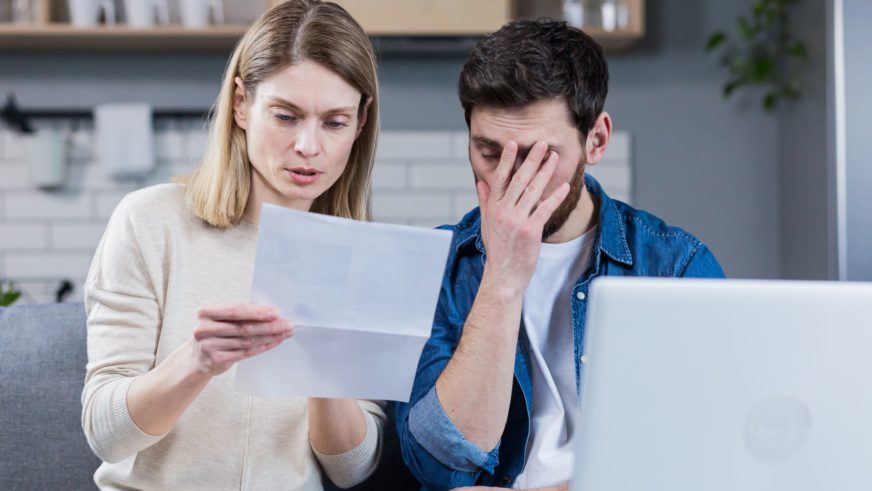
Like a storm cloud looming over your business, bankruptcy can be daunting. You’re not alone – it impacts many small business owners. But what does it really mean for you?
In this article, we’ll dissect the immediate and long-term effects of bankruptcy, navigate its legal waters, and outline strategies to bounce back stronger. Let’s demystify this financial storm together.
Key Takeaways
- Bankruptcy can have immediate negative impacts on small businesses, including frozen assets, disrupted operations, and strict regulations from creditors.
- Small businesses that declare bankruptcy have a high failure rate, with 60% failing within five years.
- Bankruptcy has long-term consequences, such as negative credit scores, personal liability for business debts, and challenges in obtaining future credit and loans.
- Understanding bankruptcy options, such as Chapter 7 and Chapter 11, is crucial for navigating the legal and financial aspects of bankruptcy.
Understanding the Concept of Bankruptcy
Before we dive in, let’s first understand what bankruptcy really is and how it’s not always as scary as you might think. Bankruptcy, in its simplest form, is a legal process allowing individuals or businesses who can’t pay their debts to seek relief from some or all of their obligations.
One of the common bankruptcy misconceptions is that it results in total financial ruin and loss of personal belongings. In reality, different types of bankruptcy protection exist under U.S law. Chapter 7 allows for liquidation where non-exempt assets are sold to repay creditors. Chapter 13, however, involves a repayment plan over three to five years. It doesn’t necessarily mean losing your property.
Another misconception is that bankruptcy permanently damages credit scores. While it does negatively impact your score initially and stays on your report for up to ten years, rebuilding credit post-bankruptcy isn’t impossible with disciplined fiscal management.
Let’s talk about bankruptcy alternatives too. You’ve got options like debt consolidation loans which combine multiple debts into a single more manageable payment; debt settlement where negotiations lead to lowered amounts due; or simple budget adjustments that free up funds for debt payment.
Obviously these choices come with pros and cons, so you must weigh them carefully before deciding on any course of action. The key takeaway here? Bankruptcy isn’t an end-all solution nor should it be the immediate go-to strategy when facing financial difficulties.
Understanding this nuanced landscape helps dispel fear around the concept of bankruptcy while opening doors towards better-informed decisions about managing business finances when push comes to shove.
The Immediate Impact of Bankruptcy on Small Businesses
You’ll find that declaring insolvency can immediately impact your company by freezing assets, altering client relationships, and disrupting daily operations. The creditors’ response could be immediate and challenging. They will often enforce stringent regulations to salvage their investments, causing a swift halt to your business’s cash flow.
The data shows that 60% of small businesses fail within five years of declaring bankruptcy. This isn’t just due to financial constraints but also the employees’ reaction. Often, they may lose trust in the company’s leadership or become anxious about job security, leading to lower productivity or even resignations.
Let’s investigate further into the creditors’ response. More often than not, they will act swiftly to recover as much debt as possible, which results in an almost instantaneous freeze on your assets. This can lead to significant disruption in daily operations – from purchasing raw materials to paying salaries.
Employees’ reaction is equally critical for survival post-bankruptcy declaration. A study found that morale drops by nearly 50% after insolvency is declared; this directly impacts productivity levels and the overall performance of the company.
Long-Term Consequences of Bankruptcy for Small Business Owners
In the long run, insolvency can have serious repercussions on you as a proprietor, affecting everything from your credit score to future business opportunities. It’s crucial to understand the scope of these impacts and how they can alter the trajectory of your professional life.
The first major consequence is Credit Damage. After filing for bankruptcy, this negative event remains on your credit report for up to 7-10 years depending upon the type of bankruptcy filed. This makes obtaining new credit lines or loans challenging due to increased rates or outright denials.
Secondly, Personal Liability arises when you’ve personally guaranteed business debts. In such cases, creditors may pursue your personal assets even after business bankruptcy.
Here are the key areas affected by insolvency:
- Future credit and loan prospects: Your ability to obtain financing in the future becomes grim due to damaged credit.
- Professional reputation: The public nature of bankruptcy filings may affect customer trust and relationships.
- Personal finances: If personal liability applies, expect an impact on personal wealth.
- Opportunities for new businesses: Starting a fresh venture could be difficult with strained resources and tarnished reputation.
Data from the US Courts reports that in 2019 alone over 23,000 small businesses declared bankruptcy. This highlights just how common this issue is – but also underscores its gravity.
Bankruptcy isn’t necessarily a death sentence for entrepreneurs; many bounce back stronger post-filing. However, understanding these ramifications empowers you with the knowledge needed to make informed decisions about managing financial difficulties in your small business journey.
Navigating Bankruptcy: Legal and Financial Aspects
Navigating the legal and financial aspects of insolvency, it’s key for you to understand how this process works and what it means for your future. Bankruptcy legislation exists to protect both creditors and debtors when a company can no longer meet its financial obligations. This law governs how debts are restructured, assets liquidated, and operations potentially resumed.
The table below gives an overview of the two main types of bankruptcy that small businesses often face:
| Type | Description |
|---|---|
| Chapter 7 | Assets are sold off to repay creditors. The business closes permanently. |
| Chapter 11 | Debt restructuring occurs allowing the business to continue operating while repaying its debts over time. |
Understanding these options will help guide your decision-making process during this challenging time.
It’s also crucial to grasp the concept of debt restructuring under bankruptcy legislation – altering debt terms or reducing outstanding balances to improve your company’s liquidity and ensure survival. It may involve extending payment timelines, reducing interest rates, or even converting debt into equity.
Remember that filing for bankruptcy isn’t necessarily the end; it can provide a fresh start by freeing up resources tied in unmanageable debts. So while it’s undoubtedly a tough decision, if navigated wisely under proper guidance considering all legal and financial aspects—it could mean survival and eventual prosperity for your small business.
Strategies for Recovery and Rebuilding After Bankruptcy
After weathering a financial storm, it’s essential to focus on strategies for recovery and rebuilding. Your entrepreneurial resilience will be tested, but remember: Bankruptcy is not the end of your business journey; it’s merely a detour.
A crucial aspect of recovery is credit rehabilitation. You have to rebuild your business’ financial reputation from scratch. Don’t let this daunt you. Consider these steps:
- Regularly check your credit report: Spot errors or discrepancies that could harm your score.
- Make timely payments: Keeping up with current obligations improves your standing over time.
- Maintain low credit balances: High balances can negatively affect your score.
The above strategies are underpinned by data-driven insights into credit scoring models which value punctuality, consistency, and judicious use of available credit.
Your next step? Foster entrepreneurial resilience. It’s a mindset shift towards viewing failure as an opportunity for growth rather than a setback.
- Embrace change: Adaptability ensures survival in fluctuating markets.
- Learn from mistakes: Each misstep offers valuable lessons.
- Persist despite setbacks: Persistence is key to long-term success.
Successful entrepreneurs exhibit high levels of resilience – they’re adaptable, learn quickly from failures, and persistently pursue their goals despite obstacles. Remember, bankruptcy isn’t indicative of future failure but an opportunity for learning and growth.
Frequently Asked Questions
How Can Small Business Owners Prevent Bankruptcy?
To prevent bankruptcy, you must prioritize budget management and financial planning.
It’s essential to maintain a detailed, realistic budget that accounts for all expenses and potential risks. Regularly review your finances, adjust your spending as needed, and save for emergencies.
Strategic financial planning helps foresee market trends or changes which could impact your business. This proactive approach can ward off bankruptcy and ensure your business’ longevity.
What Are the Alternatives to Bankruptcy for Small Business Owners?
Did you know that nearly 50% of small businesses fail within five years? If you’re struggling financially, don’t despair.
Alternatives to bankruptcy exist for small business owners like debt restructuring and credit counseling. Debt restructuring involves renegotiating terms with creditors, while credit counseling offers guidance on managing your debts more effectively.
These options can help you regain financial stability without the lasting impact of bankruptcy.
How Does Bankruptcy Affect the Personal Finances of the Small Business Owner?
When you declare bankruptcy as a small business owner, your personal finances can take a hit. Your credit score may plummet significantly, making future borrowing more difficult and expensive. You may also face asset liquidation if you’ve personally guaranteed any of the business debt.
It’s crucial to consider these impacts before deciding on this course of action, for they can linger long after the bankruptcy proceedings are over.
Can a Small Business Owner Start a New Business After Filing for Bankruptcy?
Yes, you can start a new business after bankruptcy. It’s not easy, but with strategic Bankruptcy Rebound Strategies and an understanding of Post Bankruptcy Entrepreneurship, it’s feasible.
You’ll likely face challenges like securing funding and rebuilding credit. However, many successful entrepreneurs have bounced back after bankruptcy.
Data shows that persistence, learning from past mistakes, and adapting to new financial practices often lead to stronger business foundations post-bankruptcy.
How Does Bankruptcy Affect the Small Business Owner’s Relationship With Suppliers and Clients?
Ironically, bankruptcy might just strengthen your business skills. Your supplier trust may take a hit initially as they’re uncertain of future payments.
You’ll need to rebuild that rapport through consistent, open communication and proof of financial stability. Likewise, client retention can wobble. Transparency about your situation helps here too – people respect honesty over pretense.
Analyzing data closely will guide you in making better decisions post-bankruptcy. It’s tough but not the end; rather, it’s a new beginning.
Conclusion
Like a phoenix rising from the ashes, you can rebuild your small business after bankruptcy. It won’t be easy—it’s like climbing a mountain without gear—but it’s not impossible.
You’ve learned about the effects, legalities, and recovery strategies. Now, armed with this knowledge, forge ahead.
Remember: every setback is an opportunity for a comeback. Let data guide your decisions and resilience be your compass in navigating this challenging terrain of entrepreneurial endeavor.




